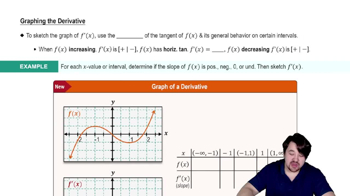Find the largest interval on which the given function is increasing.
c. g(x) = (3x - 1)¹/³
 Verified step by step guidance
Verified step by step guidance Verified video answer for a similar problem:
Verified video answer for a similar problem:



 6:21m
6:21mMaster Properties of Functions with a bite sized video explanation from Patrick
Start learning